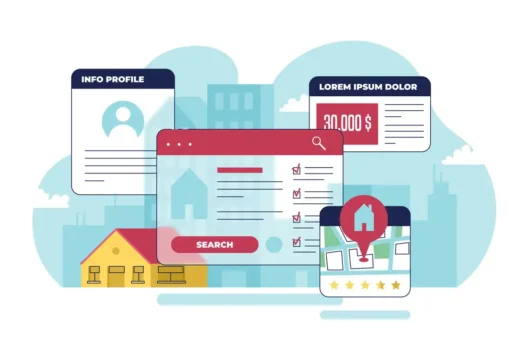5 platforms that help DIY landlords manage their property easier, Buying investment properties, Home letting
Platforms That Help DIY Landlords Manage Their Property Easier
28 June 2025
Managing rental property on your own can be rewarding, but it often demands more time, organization, and effort than expected. You’re not just the owner—you’re also the marketer, bookkeeper, maintenance coordinator, and leasing agent.
For many DIY landlords, juggling these roles without support can lead to missed details, delayed responses, and unnecessary stress. Fortunately, modern tools are making it easier to stay on top of day-to-day operations. With the right platform, you can keep your rentals running smoothly, reduce manual tasks, and maintain full oversight, without hiring a property manager or building out complex systems.
Read on to discover five platforms that can help you manage your property easier and more efficiently.
Lease Management and Document Storage
Paperwork can stack up quickly, especially when managing multiple units or handling frequent tenant turnover. Leases, renewal notices, ID copies, and inspection records all need to be accessible and organized. Relying on scattered folders or emails can lead to misplaced documents and slow response times when issues arise.
Using a property management software designed by experts for modern DIY landlords and real estate investors gives you a centralized system to create, store, and manage your lease documents efficiently. It’s a smart solution that helps you stay on top of administrative tasks without adding complexity.
The following are key tools that help simplify lease and document management:
E-signature capabilities
Instead of coordinating in-person signings or mailing physical paperwork, digital lease agreements can be sent and signed instantly from any device. This speeds up the process and keeps everything legally documented.
Compliant lease templates
Platforms like TurboTenant offer access to lease templates built to meet local laws. These templates help you avoid legal gaps when creating a new lease agreement, which is especially useful when managing rental property across different cities or states.
Secure cloud storage
Lease records, rental agreement updates, move-in checklists, and signed disclosures are all stored in one location and backed up online. You can retrieve files quickly during tenant disputes, inspections, or when renewing lease terms.
Organized lease management supports better decision-making and lowers your risk of errors—especially when you’re overseeing more than one rental real estate asset.
Listing and Marketing Tools
Empty units reduce cash flow and increase exposure to tenant turnover. For DIY landlords managing their own rental property, having reliable tools that handle listing and lead generation helps reduce time between tenants and improves ad performance. These features also reflect what many professional property management teams already rely on to maintain strong occupancy rates.
To attract reliable renters faster and streamline early-stage interactions, the following features make a difference:
- Syndicated listings across high-traffic platforms:Tools like Avail and Zillow Rental Manager allow you to publish your rental once and push it to multiple major sites, including HotPads and Trulia. This broad exposure helps increase visibility within the rental market and minimizes the chance of your listing sitting unnoticed.
- Detailed, media-rich property profiles:Creating listings with high-quality photos, clear rent terms, and essential details about unit features helps renters quickly evaluate whether the property fits their needs. Some platforms also let you highlight nearby amenities, which is especially useful when competing in tight real estate markets like San Diego or Orange County.
- Built-in lead tracking and messaging tools:Instead of juggling emails or missed calls, inquiries land in a centralized inbox where you can respond, schedule showings, or mark applicants as qualified. This gives you more control over tenant sourcing and keeps communications clear.
When paired with consistent pricing and prompt follow-up, these tools can help reduce vacancy time and improve the quality of your incoming tenant pool.
Tenant Screening Features
Screening tenants effectively reduces future issues tied to missed rent, property damage, or legal conflict. Many platforms now let DIY landlords run credit checks, eviction history reports, and background checks in just a few clicks. This makes it easier to assess potential risk before signing a rental agreement.
In addition to standard reports, some services offer scorecards or red flag indicators to simplify comparisons. These scoring systems evaluate key factors like income-to-rent ratio or prior lease violations. As a result, landlords can make informed decisions based on consistent criteria rather than gut instinct.
Moreover, digital applications keep everything in one place for quick review. Prospective tenants can submit documents, ID verification, and income proof through secure portals, reducing paperwork clutter. This structure helps streamline tenant screening while keeping sensitive data organized and accessible.
Online Rent Collection
Collecting rent manually can lead to delays, miscommunication, and missed payments. Many DIY landlords now use platforms that support digital rent collection to simplify the process and avoid chasing down checks or bank transfers. These tools offer clear tracking and more predictable income month to month.
These systems are helpful because of their automation. Tenants can set up recurring payments, and the platform sends automatic reminders when due dates approach. This reduces the need for back-and-forth communication and encourages timely payments without requiring follow-up.
In addition to convenience, these platforms offer a layer of documentation that benefits both landlords and tenants. Payment records are stored securely and can be downloaded when needed—for taxes, disputes, or financial reporting. This structured approach helps maintain consistency across multiple rental property units and supports better cash flow planning.
Maintenance Request Management
Handling maintenance requests quickly and clearly helps preserve your rental property and keeps tenant satisfaction high. Rather than relying on calls or texts, landlords can use request portals that log each issue in real time. This format makes it easier to spot recurring problems and respond with appropriate urgency.
Digital systems offer tools to assign and monitor repairs and log issues. You can attach notes, upload photos, and prioritize tasks based on severity. This kind of documentation is useful for long-term upkeep and can prevent disputes about the unit’s condition.
Furthermore, some platforms let you share requests directly with contractors or invite service providers to the platform. That means less back-and-forth and fewer missed updates during repairs. It also helps you coordinate responses more efficiently across multiple units or multifamily residences.
Final Thoughts
Managing rental property on your own comes with plenty of moving parts, but the right platform can take much of the weight off your shoulders. Having digital systems in place helps you stay organized, respond faster, and keep everything running smoothly. You don’t need a large team or outside help—just the right tools.
Comments on this 5 Platforms That Help DIY Landlords Manage Their Property Easier article are welcome.
Buying Property
Buying Property Posts
Pro managerial help preserves a landlord’s property

image source : SevenStorm JUHASZIMRUS via Pexels
5 step guide on how to find perfect new home
What are main reasons to invest in income property
Benefits of buying a new build
Building Articles
Contemporary Property Articles – architectural selection below:
Comments / photos for the 5 Platforms That Help DIY Landlords Manage Their Property Easier page welcome







